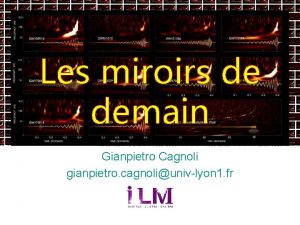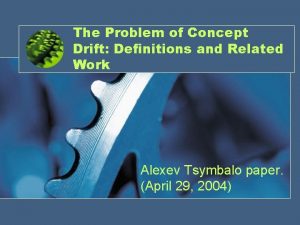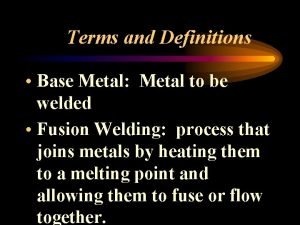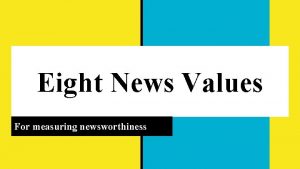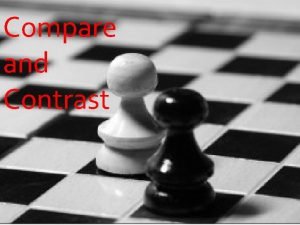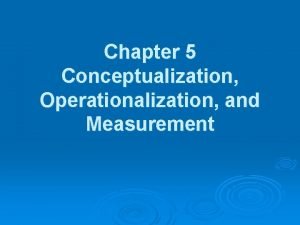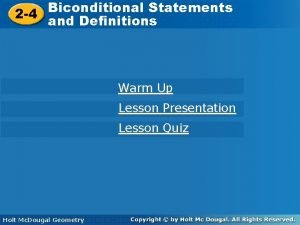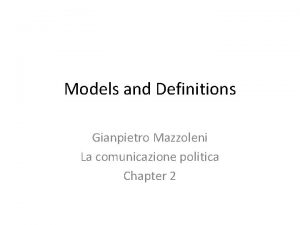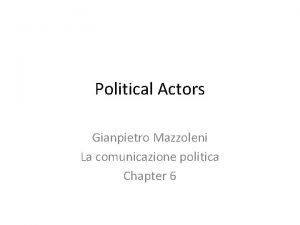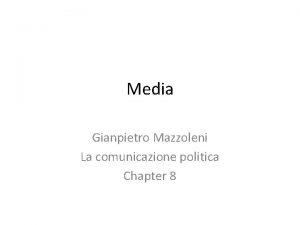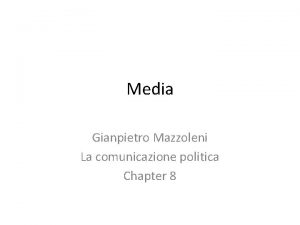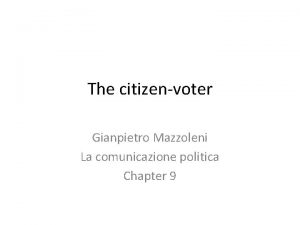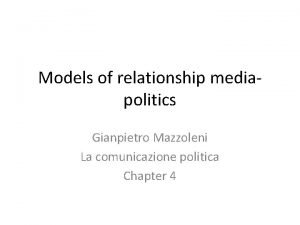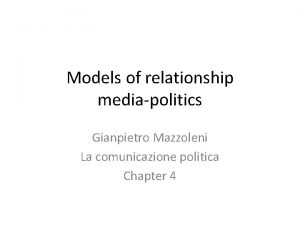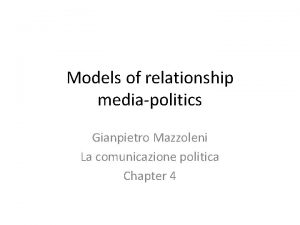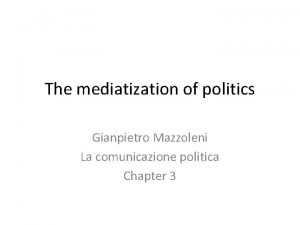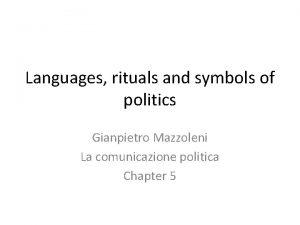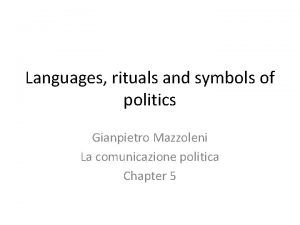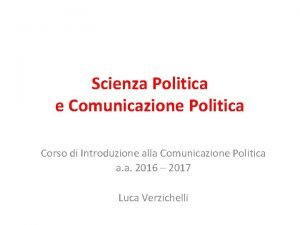Models and Definitions Gianpietro Mazzoleni La comunicazione politica















- Slides: 15

Models and Definitions Gianpietro Mazzoleni La comunicazione politica Chapter 2

Political communication as defined by Wikipedia • Political Communication is a sub-field of political science and communication that deals with the production, dissemination […] and effects of information, both through media and interpersonally, within a political context. This includes the study of the media, the analysis of speeches by politicians and those that are trying to influence the political process, and formal and informal conversations among members of the public […]. The media acts as bridge between government and public.

Actors of the political communication • Political system – Institutional actors: parliament, central and local government, judiciary, head of state – Non institutional actors: parties, social movememnts, interest groups • Media system – TV, radio, press, books, cinema, new media • Citizenship – Single people, public opinion, electorate

“Pubblicistico-dialogico” model of political communication

Mediatized model of political communication

Kinds of relationship between actors 1 1. From politics to media 1. Regulation 2. News management 3. Politics as a source 2. From politics to citizenship 1. Public communication 2. Personal relationships 3. Electoral ads

Kinds of relationship between actors 2 1. From citizenship to politics 1. 2. 3. 4. Voting Public debate Direct relationships Polls and surveys 2. From media to politics 1. 2. 3. 4. General information Watchdog journalism Partisan information Mediatization

Kinds of relationship between actors 3 1. From media to citizenship 1. General information 2. Partisan information 3. Political advertising 2. From citizenship to media 1. Exit from a TV or a journal 2. Blog, post, citizen journalism

Developments of the communication research 1 Infancy • • Rhetoric Propaganda Attitudes changes Voting Government-media relationships Functional analysis Technological improvements

Developments of the communication research 2 Adulthood • • Electoral communication Political information Political rhetoric Information, political attitudes, and political behaviors

Developments of the communication research 3 The European countries • • Beyond “limited effects” The holistic perspective Mixed approach Taking a normative perspective in account Interactions between media and politics Longitudinal, long-trend analysis Growing comparative research

The phases of the political communication 1 Since WWII to the Fifties • Preeminence of the mass parties • Citizens strongly identified with them

The phases of the political communication 2 From the Sixties to the Eighties • Fading away of the party identification (or end of ideology) • Growing use of the TV (public and commercial) • Involvement of previously detached citizens • Professionalization of the campaigning

The phases of the political communication 3 Since the Nineties • Professional management of the relationship with the public opinion by the spin doctors • Infotainment as an usual practice • Populism (as pop politics) • Targeting • Random exposition to political messages

The phases of the political communication 4 New tendencies • Non monopolistic use of the ICT (Information and Communication Technology) due to the access to the Web • Generalized use of the public and commercial TV • Changing boundaries of the citizenship
 Gianpietro cagnoli
Gianpietro cagnoli What is the difference between modals and semi modals?
What is the difference between modals and semi modals? 3 types of irony
3 types of irony The problem of concept drift: definitions and related work
The problem of concept drift: definitions and related work The correct shutoff procedure for an oxyacetylene torch is:
The correct shutoff procedure for an oxyacetylene torch is: Framing terms and definitions
Framing terms and definitions Revision materials
Revision materials What does ruefully mean in hatchet
What does ruefully mean in hatchet Weight news value
Weight news value Compare and contrast meaning
Compare and contrast meaning Cscmp meaning
Cscmp meaning Undefined terms and basic definitions worksheet answers
Undefined terms and basic definitions worksheet answers Classification of paldong
Classification of paldong Film genres and definitions
Film genres and definitions Conceptualization and operationalization
Conceptualization and operationalization Biconditional statement
Biconditional statement
